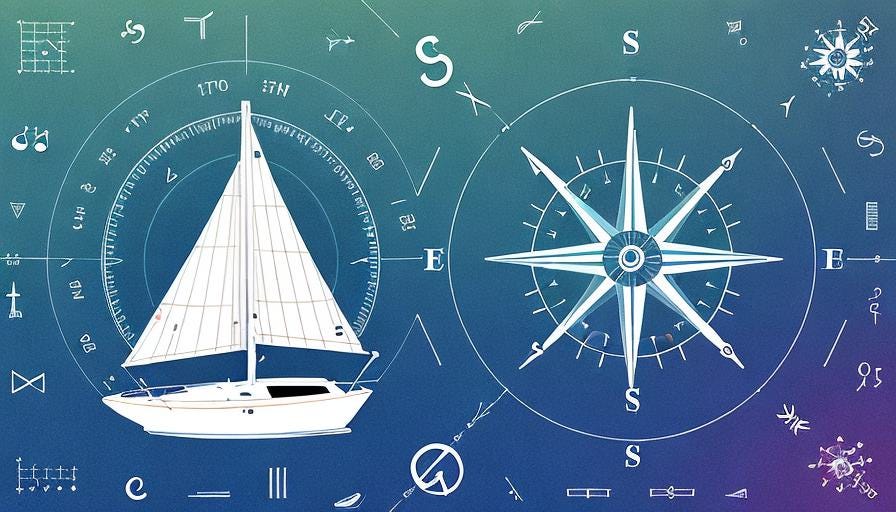Embarking on a startup journey can be exhilarating and daunting in equal measure. Whether you’re just beginning or looking to scale, every decision you make can significantly impact your venture’s trajectory. This comprehensive guide is your roadmap to success. From leveraging HubSpot’s arsenal of resources to masterminding strategic partnerships, you’ll discover tried-and-true strategies designed to accelerate growth.
Gain a holistic understanding of your buyer persona, entice users with irresistible offers, and chart your customer’s journey to create a winning startup experience. It’s time to fuel your startup’s growth and set the stage for sustainable success.
Jumpstart Your Startup Journey with HubSpot
Embarking on the startup journey can feel both thrilling and overwhelming. As you turn your vision into reality, it’s crucial to lay the right foundation during those critical early stages. That’s where HubSpot can help.
HubSpot offers an array of helpful resources and discounted software specifically designed for qualifying startups. This allows early-stage companies to get access to robust tools that can help them better understand their ideal customers, optimize their site and funnels, and run targeted campaigns—all on a budget.
One of the key places to start is by truly defining your target customer persona (buyer persona). Rather than taking guesses, HubSpot’s Make My Persona tool lets you easily create data-backed personas based on real visitors to your site. This ensures your messaging, offers, and campaigns will resonate.

Next, map out the typical customer journey to identify friction points and opportunities to convert and retain users more effectively. HubSpot’s Customer Journey Template provides a framework you can customize to your business. Identify key stages and decision factors, then pinpoint areas to reduce drop-off.
As a startup, every lead and customer counts. So optimizing your onboarding flows and leveraging smart calls-to-action can have an outsized impact. HubSpot’s Landing Page Grader and Call-to-Action Upgrade tools analyze your pages and CTA buttons to highlight areas for improvement. Implementing their recommendations can directly lift conversions.
Ongoing testing and optimization should be baked into your strategy from the start as well. HubSpot’s A/B Testing tool makes it simple and straightforward to experiment with subject lines, content, offers, and more—without technical resources. This allows you to double down on what works while phasing out what doesn’t.
With the fundamentals covered, you can then layer on more advanced tactics over time—from crafting irresistible free trial offers to strategically partnering with complementary businesses. HubSpot equips startups with the information and tools needed to lay a strong foundation, then optimize their way to scale.
Amplify Your Startup’s Growth with HubSpot’s Toolkit
HubSpot presents a treasure trove of discounted software, resources, and guidance, all designed to fuel rapid growth for qualifying startups. These startup-specific tools empower early-stage companies to broaden their reach, enhance conversions, and scale effectively, even on a shoestring budget.
One of the standout offerings from HubSpot is their Growth Suite, available at a whopping 80% discount. This comprehensive platform for marketing, sales, and customer service provides a powerful CRM, email marketing, chat, meetings, and more, all under one roof. Startups can harness these integrated tools to attract leads, nurture contacts, tailor messaging, streamline sales calls, deliver top-notch support, and ultimately transform visitors into thrilled customers.
Beyond the discounted tools, HubSpot assists startups in crafting growth strategies that are custom-fit to their business stage. Their Startup Starter Kit provides frameworks, templates, and practical advice on crucial tasks like pinpointing target customers, charting the buyer’s journey, refining brand messaging, and pinpointing key growth metrics. Early-stage companies can utilize these resources to crystallize objectives, boost funnel conversion, and track significant progress.

HubSpot also bridges startups with a community of growth-focused peers. Through worldwide events, mentorship programs, and an online forum, entrepreneurs can swap ideas, gain insights from fellow founders, and even collaborate with complementary startups. These cooperative opportunities offer fresh viewpoints while sidestepping the need to completely reinvent the wheel of growth.
With a diverse blend of cost-effective tools, strategic counsel, and peer connections, HubSpot equips startups with limited resources to compete with the big leagues. Their startup program allows early-stage companies to set up efficient systems, captivate audiences, and scale sustainably from the get-go. By capitalizing on HubSpot’s discounted offerings, startups lay the groundwork for rapid expansion, even with constrained budgets.
Charting Your Startup’s Customer Journey
Grasping the journey of your target customer is vital for startups aiming to attract and keep users. By charting the entire process – from the initial awareness of your brand to becoming a faithful customer – you can pinpoint precisely where your startup needs to make a mark.
This section will guide you through a step-by-step framework for visualizing your customer’s experience. Armed with a journey map, you’ll be ready to spot opportunities to boost conversion rates at each stage of the funnel.
Clarify Your Buyer Persona
Firstly, gain a crystal clear understanding of your ideal customer – be it a small business owner, a busy parent, or passionate travelers. Construct a comprehensive buyer persona that encapsulates details like demographics, challenges, goals, and objections.
With a sharp understanding of your target audience, you’ll ensure every interaction in your funnel directly addresses their desires and needs.
Chart the Journey Stages
Next, chart the typical stages your audience navigates on their path to becoming a customer. While every business is unique, most customer journeys include the following steps:
Awareness – How does your audience first encounter your brand? Do they come across an ad, or get referred by a friend? Pinpoint initial discovery channels.
Research – What information do potential customers seek? What review sites, comparison tools, and social media groups do they turn to? Identify key research habits.
Consideration – How do they weigh options? Who influences their decision making? Understand their comparison criteria.
Purchase – What final obstacles prevent them from purchasing? How could you simplify trials or payments? Spot friction points.
Onboarding – How do you greet new signups and guide them to that “aha” moment? Structure the early experience.
Loyalty – How often do they use your product? How many return to upgrade or refer others? Measure engagement.
Chart the Emotional Journey
The customer journey isn’t just functional – there’s an emotional arc as well. At each step, consider:
How does the audience feel when they first hear about you? Are they curious, but a little skeptical?
What emotions arise as they ponder different options? Are they paralyzed by choice or fear of commitment?
How do they feel after purchasing? Excited? Nervous? Empower them.
Understanding emotions unveils how to better nurture leads toward commitment.
Spot Gaps & Opportunities
Now examine your map. Look for gaps between what customers expect, and what you currently deliver. These disconnects point to untapped opportunities.
Does your website swiftly communicate value? Do they grasp the benefits within 10 seconds?
Is your onboarding experience intuitive or confusing? How might you speed up time-to-value?
Does the post-purchase feel anticlimactic? Could referral perks or community forums keep excitement high?
Let your journey map shed light on possibilities for optimization. With each enhancement, you’ll smoothly transition leads into happy, loyal brand advocates.
Entice Users with Unbeatable Offers

Attracting attention and convincing visitors to take action necessitates unbeatable offers. Designing enticing discounts, free trials, and promotions customized to each stage of the funnel can significantly enhance conversion rates.
Firstly, it’s crucial to understand your numbers. Compute metrics such as average order value and customer lifetime value. Grasp your profit margins. This will help you determine how much budget you have for structuring promotional offers. With these key figures, you can strategically create deals designed to maximize conversion and minimize losses.
Next, consider promoting through pop-ups and embedded offers rather than separate landing pages. On-page offers are more effective as they capture attention within the existing user journey, eliminating the need for an extra click. Pop-ups, in particular, convert exceptionally well when timed correctly. However, be mindful not to overuse pop-ups and irritate visitors.
Transactional discounts that lower order values are a popular technique. Think about percentage or dollar discounts that are applied automatically at online checkout. This reward for completing a purchase can persuade hesitant visitors. However, ensure that the reduced margins still result in profitable customers after considering lifetime values and acquisition costs.
Free trials eliminate financial risk, allowing visitors to experience key benefits first-hand. Determine an ideal free trial length – too short reduces conversions while too long increases cancellations before paid conversions. Structure free trial offers to transition into purchased subscriptions smoothly.
Promotional giveaways also lower financial barriers by offering free or heavily discounted products. Offering lead magnets, free tool access, free shipping, and bundled bonus items incentivize visitors to complete sign-ups and purchases to claim these perks. Useful freebies also foster goodwill and brand loyalty.
Referral programs stimulate sharing and word-of-mouth promotion. Referrals from existing customers convert better than cold leads. Reward both referrers and referees with discounts, account credits, or free products. This encourages viral sharing.
Lastly, test and iterate. Monitor conversion rates, margins, and customer metrics across various offers. Experiment with deal structures and eligibility criteria. Use data to focus on your most successful promotions. Refine those nudging metrics in the right direction. Stay updated with changing customer preferences as your startup evolves.
In conclusion, unbeatable deals thoughtfully structured to align with funnel stages, margins, and conversion goals can work wonders. Allocate a test budget for experimenting with various perks and observing their impact. Continue fine-tuning promotions based on data to entice visitors and guide them down the conversion path. With compelling offers tailored to each audience, your startup will attract and monetize website traffic
Scaling Through Strategic Partnerships: A Guide for Startups
Strategic partnerships can be a game-changer for startups, offering a fast track to growth and credibility. By teaming up with established businesses that complement your own, you can tap into their resources, relationships, and customer base.
When considering potential partners, focus on these key areas:
Shared Values and Vision
Look for partners who resonate with your values and vision, and who are equally committed to serving customers. Partnerships that are solely profit-driven often crumble, so lead with the value you can jointly offer customers.
Complementary Offerings
Choose businesses whose products or services complement, rather than compete with, your own. This allows you to offer a comprehensive solution that no single company could provide, and prevents you from vying for the same customers. Identify gaps in your offerings and seek partners who can fill them.
Shared Customers and Channels
Give priority to partners who already have a foothold in your target customer segments and distribution channels. By leveraging their relationships and access, you can speed up your startup’s expansion into new markets. Offer to jointly promote their products or services to your customers in return.
While strategic partnerships offer exciting potential, they do require careful management. Here’s a step-by-step guide to developing new alliances:
1. Identify Target Partners
Research companies with complementary solutions that suit your customers. Give priority to those serving your target segments and with an established presence.
2. Initiate Discussions
Reach out to decision-makers, share your vision, and assess initial fit in terms of shared values, offerings, and customers.
3. Define the Opportunity
Clarify the tangible value you could provide each other’s customers and businesses through an alliance. Paint a specific vision of the partnership opportunity.
4. Set Requirements
Establish objectives, metrics, responsibilities, and governance processes to guide the partnership. Address concerns through a trial period.
5. Launch, Track, and Refine
Roll out co-branded initiatives, track impact versus goals, and refine based on learnings. Maintain transparency and celebrate wins.
Well-structured B2B partnerships can significantly boost startups’ market traction and customer access. However, shifting strategic priorities or poor execution can derail alliances over time. Here are three tips to maintain alignment:
Regularly Revisit Your Shared Vision and Value
Ensure your shared vision and value still resonate and adjust activities accordingly.
Formalize Processes Early On
Establish transparency regarding responsibilities, metrics, and decisions from the get-go. Revisit these as needed.
Overcommunicate
Especially regarding changes that may impact the partnership. Have open conversations to resolve issues quickly.
By following a thoughtful partnership strategy and development process, your startup can leverage the reach of established companies while staying focused on your core offering. Use your partners’ expertise and groundwork to provide superior solutions to shared customers. Feed these customers’ enthusiasm back into improving your products. When alliances are structured as win-win from the start, both parties will motivate each other to grow better and faster.
Unleashing Startup Growth: Proven Tactics
For most startups, rapid growth is the primary objective. Although growth necessitates a multitude of interconnected strategies across various teams, individual growth enthusiasts can experiment with innovative tactics to spark sustainable expansion. The secret lies in aligning each growth experiment with a business objective and measuring its impact.
Let’s delve into tried-and-true growth strategies for each startup phase that have propelled companies to valuations exceeding $10 million.
Seed Stage
At the inception stage, concentrate on stickiness and organic reach. Strategies such as referral programs can gain early momentum by incentivizing existing power users to share content and invite friends. For instance, Dropbox experienced a 3900% growth in 15 months by offering free storage space to both the referrer and the referred, encouraging viral sharing.
Another strategy is to leverage existing networks by guest posting on industry blogs that align with your ideal customer. This increases brand visibility and generates backlinks to your site. Remember to provide valuable advice rather than a sales pitch. Hubspot, for example, grew hundreds of links this way before launch, accelerating early growth.
Lastly, actively engage new users through prompts and educational emails. Customer engagement software Usercycle saw a 25% increase in click-through rates and a 300% increase in conversion rates with a simple post-sign-up email series highlighting key features.
Series A Stage
Once initial traction is gained, focus on automation and optimization. Retarget visitors through ads across channels to capture more leads from previous interest. For example, the inside sales platform Outreach.io saw a 308% increase in conversions by retargeting visitors with relevant ads.
Also, consider implementing exit intent and scroll triggered pop-ups to capture leads who demonstrate intent through site behavior. Unbounce, for instance, saw an average increase of 40% in conversion rates by doing so.
Series B & Beyond
In later stages, growth plateaus without expansion into new markets. Localization broadens appeal and positions your brand for global scale. Entertainment leader Spotify, for example, launched in new languages every few weeks, fueling uptake across geographies.
Partnerships also offer mutually beneficial distribution opportunities. Slack, for instance, formed an integration with the popular cloud storage platform Box to tap into their millions of business users. This strategic alignment helped both parties expand their reach.
While individual tactics yield variable results, the collective impact can be significant. Approach growth creatively, stay aligned to company goals, and scale impact through relentless testing. With concerted effort, your startup can soar well beyond the $10 million threshold.
Elevating your startup towards greater success is a journey that involves strategic planning and smart tools. By utilizing HubSpot’s resources, mapping customer journeys, enticing users with unbeatable offers, forging strategic partnerships, and implementing proven growth tactics, you can fuel your startup’s growth and achieve your vision.




Permalink
Permalink
Permalink
Permalink
Permalink